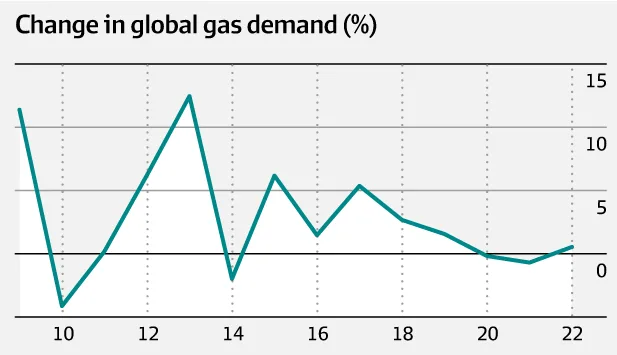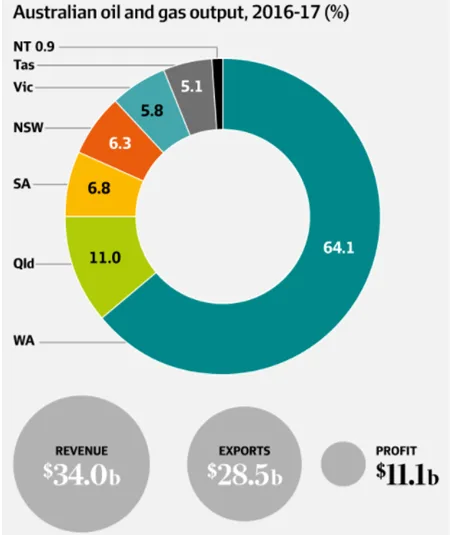Introduction To The Issue
The concepts of demand and supply play a significant role in the micro-economic analysis. The demand for any resource or commodity is the amount of the products desired by the consumer at a specified time and price, while the supply is the amount of the product presented to the market for sale at a particular time and price. Julie Bishop published an article in The Australian newspaper titled ‘Energy Traders ‘Club’ Corners spot gas Market’ on March 5, 2018. This article was concerned with the issue of the gas market in the country. The feature highlighted the need for the evolution of the eastern market as well as the transition of the domestic market into global markets through export. Liquid natural gas has caused an increase in the market size of domestic gas on the East Coast and the surrounding areas. Consequently, the demand for domestic gas also increased while the supply decreased. The LNG industry has in the past struggled to increase the supply of gas and infrastructure such as the pipeline but uncertainty concerning the expenses and accessibility is the major problem they were and still facing.
People Involved In The Issue
The government of Australia is the major stakeholder in the issues surrounding the domestic supply of gas in the Eastern Australia Gas Market. The government is responsible for making the key decision on how the resources of the country, in this case, the gas are managed to ensure the development of the concerned industry. Other stakeholders in the issue are the organizations forming the LNG industry, the producers, pipeline managers, tenement holders, local gas suppliers and consumers (Corbeau & Ledesma, 2016). The problem started with the move by the LNG industries to expand the market for gas through the introduction of advanced pipeline infrastructure as well as new supplies of gas to the industry. This caused a major effect on the cost, demand, and supply of the domestic gas. The traders are having difficulties accessing resources at normal prices, which makes it even harder for the customers to buy gas at a higher price (Bishop, 2018). Besides, other Commonwealth agencies and governments are the major stakeholders in strategic planning and decision making concerning the issue of supply and demand of gas.
Sources: IBISWorld
Figure 1 shows the change in the global demand for gas
Economic Analysis
Australia’s market demand for gas is the major contributing factor to the general demand of the country in the eastern market. In the eastern market, the demand for gas is higher, but the significant changes in the price of gases have also made some changes in the demand. This is because the prices of gas products fluctuate with a lower price elasticity (Friedman, 2017). The move by the LNG to expand the gas industry to the global market is having a positive impact on the country’s gas industry. However, this move is adversely affecting the domestic market.
The expansion requires an increased amount of the oil and gas output which eventually have a direct impact on the prices of the gas (Friedman, 2017). The expansion would increase the prices which will cause the industry users such as the traders to also increase their prices. Hence, it is imperative to state that the export of gas from the country to other countries would significantly decrease the demand for oil and gas in the country (Friedman, 2017). This is according to the demand and supply theory, which asserts that the availability of the product impacts the price of the product; hence, when the availability is the product is low, the prices tend to increase.
The availability of gas would impact not only the prices but the labor force as well as the general industry. The lower availability of the gas would meet higher labor availability. The cost of labor would be reduced because the availability and production of the gas would respond to the prices in the industry. The general industry would be likely affected as the market players have to follow the consumer acts governing the industry (IBP, 2013). As a consequence, the government and the industry users have an obligation to regulate the prices in regards to the global demands at the same time sustaining the domestic market’s gas industry.
Sources: IBISWorld
Recommendations
For that reason, the government should embark on a serious mission to regulate the industry. First, the government should consider secondment of the workers to other employment or positions to develop capacity. Second, international standards should be the basis of the regulation in the industry. Third, a ban or stiffer penalties should be imposed on illegal flaring, which has an adverse impact on gas utilization efforts (Sayigh, 2018). Fourth, an incentive scheme should be put in place for those supplying domestic gases to the domestic market at the set industry price. Fifth, research and discovery initiatives should be implemented in order to discover the undiscovered gas resources in the market/country. Sixth, a strict requirement that would contribute to a faster response to regularities all over the country should be set up.
Conclusion
The use of natural gas has fewer adverse effects on the economy and the general life of the people of Australia. This is because it produces less pollution, contaminations and other harmful particles. Hence, the government should increase the supply of natural gas to the population and safeguard the process of supply. The users in the industry must also use supply and contracting strategies to protect the supply process. Therefore, the detailed knowledge concerning the demand and supply concept can help in understanding the supply problem in Australia and how it can be solved.
Biography
Bishop, J., 2018. Energy traders ‘club’ corners spot gas market -The Australian. [Online]
Available at: https://www.theaustralian.com.au/…/energy-traders-club-corners-spot-gas-market/…/02e…
[Accessed 19 April 2018].
Corbeau, A.-S. & Ledesma, D., 2016. LNG Markets in Transition: The Great Reconfiguration. New York: Oxford University Press.
Friedman, L. S., 2017. The Microeconomics of Public Policy Analysis. Princeton: Princeton University Press,
IBP, I., 2013. Australia Oil, Gas Resources, and Exploration Handbook Volume 3 South Australia – Strategic Information and Regulations. Online: Lulu.com.
Sayigh, A., 2018. Transition Towards 100% Renewable Energy: Selected Papers from the World Renewable Energy Congress WREC 2017. New York City: Springer.
Cite This Work
To export a reference to this article please select a referencing stye below:









